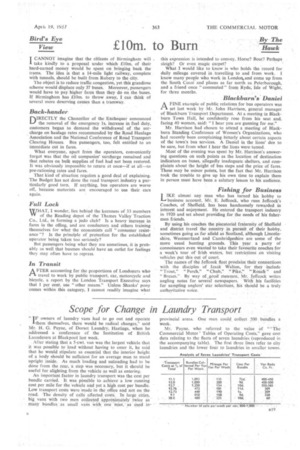Scope for Change in Laundry Transport
Page 53

If you've noticed an error in this article please click here to report it so we can fix it.
" IF owners of laundry vans had to go out and operate
them themselves, there would be radical changes," said Mr. H. G. Payne, of Dorset Laundry, Hastings, when he addressed a conference of the Institution of British Launderers at Blackpool last week. After stating that a 5-cwt. van was the largest vehicle that it was possible to load without having to enter it, he said that he would stipulate as essential that the interior height of a body should be sufficient 'for an average man to stand upright inside. As much loading and unloading had to be done from the rear, a step was necessary, but it should be useful for alighting from the vehicle as well as entering. An important factor in laundry transport was the cost per bundle carried. It was possible to achieve a low running cost per mile for the vehicle and yet a high cost per bundle. Low transport costs were 'made in the office and not on the road. The density of calls affected costs. In large cities, big vans with two men collected approximately twice is many bundles as small vans -with. one rn'an,' as used in
provincial areas. One man could collect 500 bundles a week.
Mr. 'Payne, who referred to the value of " ' The Commercial Motor' Tables of Operating Costs," gave cost data relating to the fleets of seven laundries (reproduced in the accompanying table). The first three lines refer to city laundries and the lower four to laundries in smaller towns.




























































































